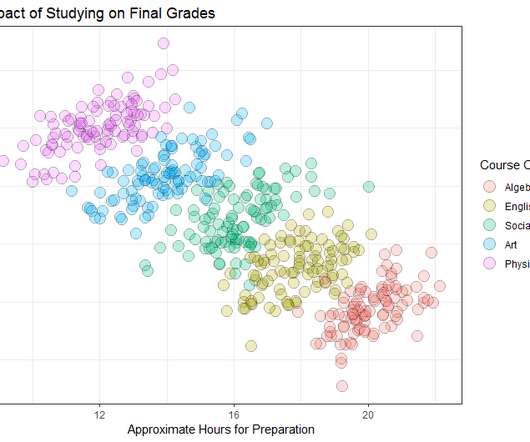Understanding Simpson’s Paradox to Avoid Faulty Conclusions
Sisense
JANUARY 21, 2020
This is an example of Simpon’s paradox , a statistical phenomenon in which a trend that is present when data is put into groups reverses or disappears when the data is combined. It’s time to introduce a new statistical term. In 2009, researchers suggested that Simpson’s paradox may occur more often than commonly thought.












Let's personalize your content